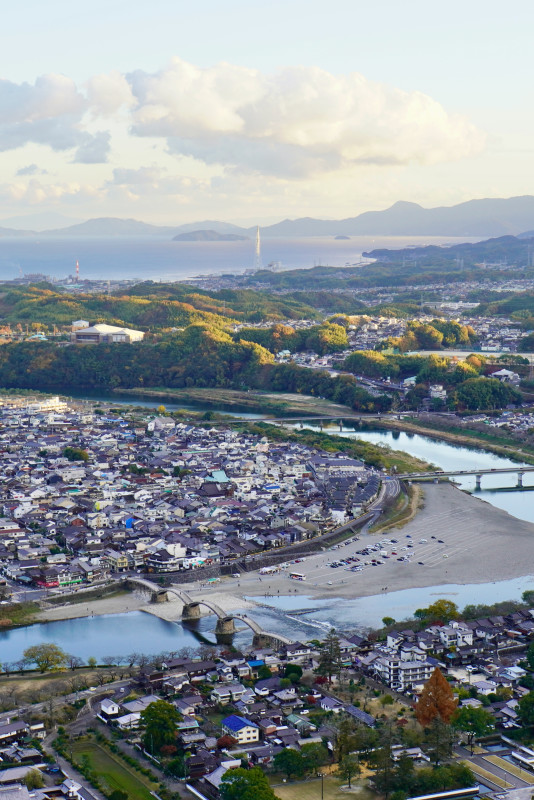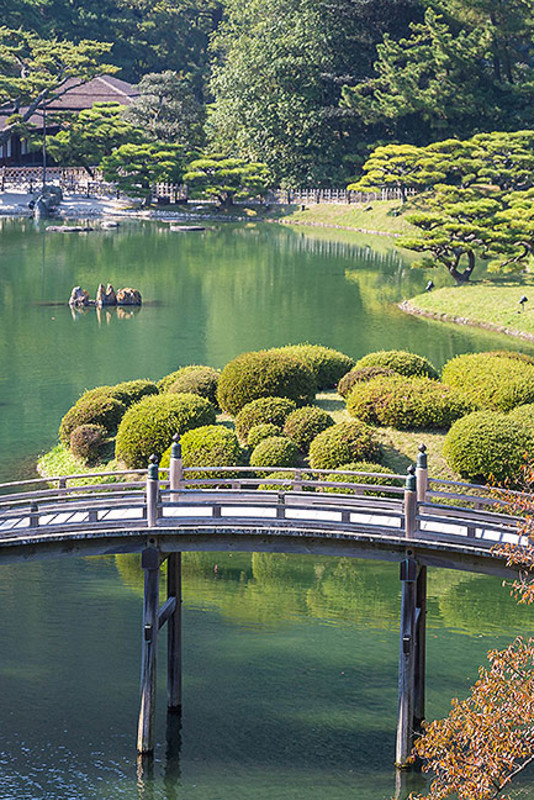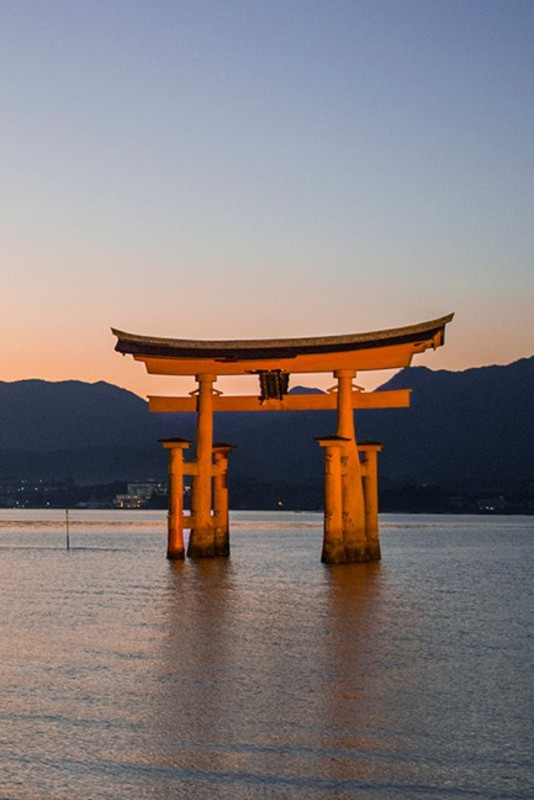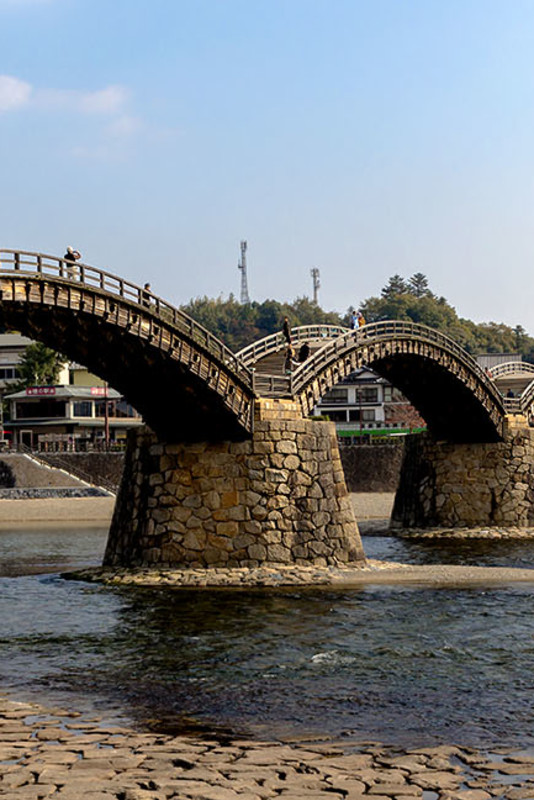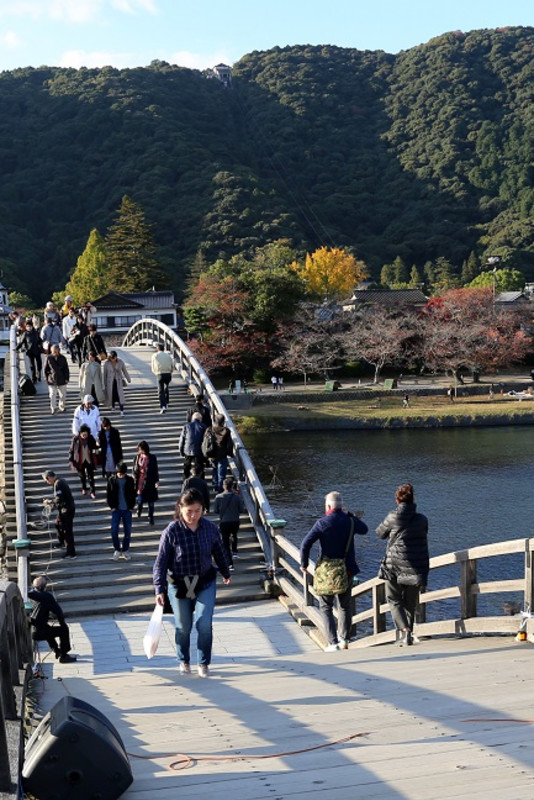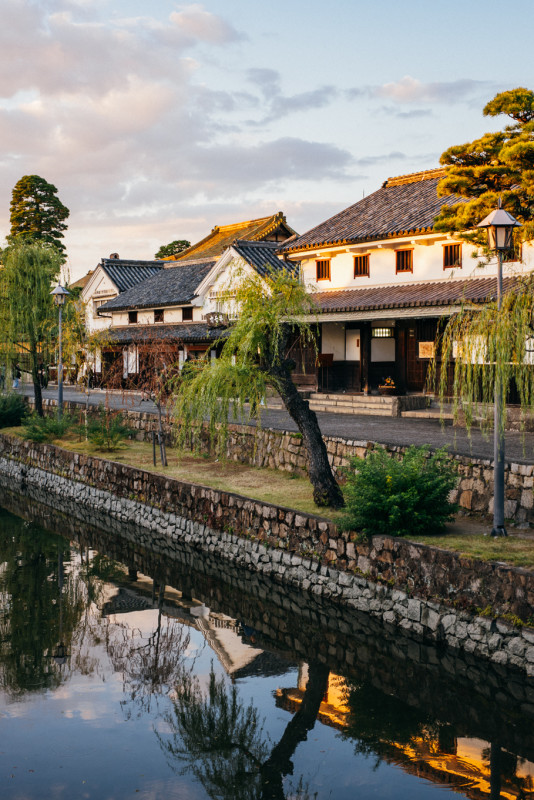Itineraries
Step back into Setouchi History in Kurashiki, Tomonoura and Onomichi

Including Okayama’s striking “Crow Castle” and majestic Korakuen Garden, Kurashiki’s beautifully preserved merchant district, the retro charm of the historic port towns of Tomonoura and Onomichi, and beautiful Seto Inland Sea vistas, this 3-day itinerary has more than enough to delight those in Japan for the first time, as well as repeat visitors looking to get off the beaten track.
- Day 1
- Okayama and Kurashiki
Travel: Osaka to Okayama
・Take the Shinkansen from Shin-Osaka Station to Okayama Station (Approx 45-50 minutes)
Okayama Castle and Korakuen Garden
The main building of Okayama Castle may be a reconstruction, but the imposing black facade, from which it earned its nickname, 'Crow Castle', provides a striking contrast to the pristine white walls of Himeji Castle. Positioned gracefully alongside the flowing Asahi River, Okayama Castle invites you to relax and absorb the breath-taking views of the castle itself and adjacent Korakuen Garden. Explore distinctive architectural features of Japanese castle design, discover workshops dedicated to the region’s famous Bizen-yaki pottery, and don traditional princess or feudal lord attire for a memorable photoshoot.
Korakuen Garden, ranked among the top three in the country, is a harmonious fusion of meticulously manicured landscapes, tranquil ponds, and enchanting traditional architecture. Immerse yourself in the timeless beauty of sculptured landscapes, traditional tea houses, and vibrant koi ponds—a symbol of wealth and power in Japanese culture. Try a Japanese tea ceremony in one of the garden’s tea houses and, at certain times of the year, some of the formal buildings host tea ceremonies where masters host and teach you the art of tea.
To fully immerse yourself in this rich cultural enclave, we recommend obtaining the Okayama Castle and Korakuen Garden Pass.
URL: https://okayama-castle.jp/home-en/
Travel: Okayama to Kurashiki
・Take a local train from Okayama Station to Kurashiki Station (Approx10-20 minutes)
Kurashiki Bikan Historical District
Kurashiki prospered as a political center and trade hub after coming under the direct control of the Tokugawa Shogunate in 1642. Kurashiki’s fortune continued during the late 19th century and early 20th century, this time led by the textile industry. As the town escaped relatively unscathed in WWII, the mix of traditional Japanese and Western-style warehouses and mansions built along the Kurashiki River still remain. In the Bikan Historical District, you can take a walk through history, from the time of the samurai to Japan’s emergence as an industrial powerhouse.
Kurashiki’s historical quarter is not only expertly preserved, but also quite lively. A wide variety of shops, cafes and eateries, from traditional to trendy, are based in the warehouses, and it is a pleasure to wander around the town. Traditional boat tours along the Kurashiki Canal that flows through the district, allow you to admire the town's charm from a different perspective. Several places rent kimono and yukata for visitors to fully embrace the historical vibe.
Museum and culture lovers are well catered for within this compact, walkable area. Prime among Kurashiki’s museums is the Ohara Museum of Art which has an impressive collection of internationally acclaimed masterpieces. The Kurashiki Museum of Folkcraft and Kurashiki Archaeological Museum are appropriately housed in 200-year-old rice granaries. Ivy Square, a red brick facility on the site of a former cotton mill, offers a variety of workshop activities, including Bizen-yaki pottery, which is one of Japan's six ancient pottery styles.
There are many places to eat around Kurashiki’s historical district, but, if you are looking for a refreshingly sweet treat, one in particular deserves a special mention. Kurashiki Momoko is very popular for its gorgeous and tasty parfaits, desserts and cakes featuring seasonal fruits, including many that are locally grown in Okayama Prefecture. Okayama’s mild climate and technical skill of its farmers have earned it the nickname of the “Kingdom of Fruit” and Kursashiki Momoko is a great place to sample some. There are four outlets to choose from, but the original Sohonten has an impressive collection of French Art Nouveau glassware by Émile Gallé on display.
As night descends and the streets illuminate, Kurashiki takes on a serene ambiance, offering a different yet equally captivating experience.
Accommodation: Ryokan Kurashiki
Ryokan Kurashiki, overlooking the canal that runs through the heart of Kurashiki’s historical district, is in one of the most picturesque locations in the district and is considered the best traditional Japanese inn experience in the area. Housed in a former sugar warehouse, all Ryokan Kurashiki’s eight rooms have a traditional architectural aesthetic with stylish accents and modern comforts such as low profile western beds. The Okuzashiki suite, tucked away within the depths of the ryokan, feels like staying in your own private villa. Exquisite seasonal kaiseki dinners, featuring the abundant produce of the Setouchi region, and beautifully presented breakfasts are a highlight. Use of a private onsen is also available by reservation.
URL: https://www.ryokan-kurashiki.jp/en/top.php
- Day 2
- Tomonoura and Onomichi
Travel: Kurashiki to Tomonoura
・Take a local train from Kurashiki Station to Shin-Kurashiki Station (Approx 10 minutes)
・Take the Shinkansen from Shin-Kurashiki Station to Fukuyama Station (Approx 10 minutes)
・Taxi or local bus (Approximately 30 min) to Tomonoura
Tomonoura
Tomonoura is one of the best preserved of the Seto Inland Sea’s Shiomachi ports, in which sailors, diplomats, samurai and merchants of the past would cool their heels while waiting for the tides to shift and allow them to continue on their journey. Sitting on the cafe terrace in the shadow of the Tomonoura’s iconic Edo era (1603-1868) stone lighthouse, it is easy to imagine how this, now sleepy, port was once a hive of activity, fueling trade, commerce and political intrigue.
Tomonoura’s picturesque townscape was the inspiration for the location of Hayao Miyazaki’s animated feature Ponyo on the Cliff by the Sea. Just following your nose as you wander the narrow streets, lined with many buildings that have survived well over 100 years, is one of the best ways to enjoy the town, but there are a few must see spots to seek out. Chief among them is Fukuzen-ji Temple’s Taichoro Pavilion, where distinguished arrivals were received. One Korean envoy proclaimed the view framed by the simple room’s windows to be “the most beautiful scenery in East Asia”, and it is a view that remains largely unchanged 300 years later. Sutra copying experiences are offered in a side room here; surely one of the most picturesque places to engage in this meditative practice.
For an even more commanding view of Tomo and the island of Sensuijima opposite, you have to head to the hills. First to Ioji Temple which is about 500m from the lighthouse, followed by a climb of 583 stone steps (numbered for your convenience) to the Taishiden. The effort, however, is rewarded by the most incredible panorama.
Tomonoura’s sea bream, an auspicious delicacy, steeped in tradition
Tai (sea bream or red snapper) is the fish of choice in Tomonoura and there are several restaurants that specialize in tai cuisine, serving the auspicious fish every which way you can imagine. Treat yourself to a tai kaiseki multi-course meal to sample them all. During May each year, local fishermen demonstrate a 400-year-old net fishing technique developed in the 17th century. It’s a colorful and festive affair that shouldn’t be missed if you are in the area at this time of year.
Abuto Kannon
On the 20 minute taxi ride from Tomonoura to our hotel, consider making a brief detour to Abuto Kannon. The views of the nearby islands from this small hall at which people pray to the Kannon, the goddess of mercy, for safe delivery of children and safety at sea, is breathtaking.
Accommodation: Bella Vista Spa & Marina Onomichi
After two history and culture-packed days, you deserve to kick back, relax and treat yourself to a stay at Bella Vista Spa & Marina Onomichi. Stunning sunsets, superb Seto Inland Sea views, and a resort-style terrace area with pools, lounge and dining areas, all telling you that it’s time to just “be”. The hotel’s “Kilometer Zero” concept highlights its commitment to showcasing the very best of the Setouchi region’s food, industry and culture through its use of local ingredients from the sea and the mountains of Hiroshima and the Inland Sea in its restaurants and local denim, Kasuri fabric and furniture in its design. With top class spa treatments also on offer, you may find it very difficult to leave.
URL: https://www.bella-vista.jp/en/
- Day 3
- Onomichi
Travel: Tsuneishi Port to Momoshima Island
・Take a taxi from Bella Vista Spa & Marina Onomichi to Tsuneishi Port (Approx 5 minutes)
・Take the ferry from Tsuneishi Port to Momoshima Island (Approx 10 minutes)
・Alternatively, take a taxi direct from Bella Vista Spa & Marina Onomichi to Onomichi (Approx 40 minutes)
Art Base Momoshima
An interesting way to access Onomichi from Bella Vista is by the colorful polka-dot ferry which leaves from Tsuneishi Port, calling at the island of Momoshima on the way. Momoshima’s main attraction is Art Base Momoshima; a contemporary art gallery and space in a repurposed school which had closed due to island depopulation. The brainchild of Yukinori Yanagi, the artist best known for his World Flag Ant Farm and the incredible Seirensho installation on the island of Inujima, Art Base Momoshima is as much a rural revitalization project as it is an art project.
Travel: Momoshima Island to Onomichi
・Take the ferry from Momoshima Island to Onomichi (Approx 25-50 minutes)
Explore Onomichi, town of temples, cats and bicycles
Like Tomonoura, Onomichi is also a port town with a long history, but while Tomonoura is known for its 17th and 18th century townscape, Onomichi is famous for retro ambience, evocative of the Showa era (1926-1985).
Whether you visit the temples and cats on Mt Senkoji, the retro shopping arcade, or the stylish boutique hotels and restaurants, Onomichi has something for everyone. Begin your adventure at Onomichi U2, a repurposed warehouse that has been transformed into a must-visit destination. The complex boasts stylish shops, a restaurant and the Hotel Cycle – a chic hotel designed and built for cyclists. If you would like to sample some of the Shimanami Kaido cycle route, which starts from just across the Onomichi Channel, bicycles are available for rent from the Giant store here or from the public rental bike service adjacent.
Ride the ropeway to the top of Mt Senkoji for a panoramic view of Onomichi and Mukaishima Island across the strait and say hello to the cats along Neko no Hosomichi (Cat Alley) on the way down. Stroll along the retro shopping arcade and explore the maze of alleyways branching off the main street.
Seek out Tea Stand Gen, a charming tea shop with a loyal fanbase who travel from far and wide to sample the delicious organically grown teas. Those who prefer something a little stronger might like to check out Onomichi Brewery, run by a friendly couple who use local agricultural by-products and produce in the brewing process. Join one of the lines that snake from the town’s most popular shops serving the town’s soul food, Onomichi Ramen, made with soy sauce based soup, locally caught fish and pork fat.
LOG, a boutique hotel designed by renowned architect Bijoy Jain, sits halfway up on Mt. Senkoji overlooking Onomichi. This one-of-a-kind accommodation is the perfect choice for anyone looking to spend an extra night in Onomichi.





























































